
One of my many embarrassing automotive fetishes is the whole concept of packaging; how can you cram all the stuff needed to make a car go while still maximizing interior volume? It’s a challenge, and most modern EVs have settled on a “skateboard” design, with the battery packs set into the floor, which provides a lot of packaging freedom. One British company, Page-Roberts, thinks they have a better idea, but I’m not so sure, mostly because it reminds me of a Zündapp Janus. That’s not a bad thing, but I’m not so sure it’s better.
Essentially, what Page-Roberts is proposing is packaging the batteries in a sort of roughly-triangular shaped, vertically oriented pack right at the center of the car. As you can see, this splits the interior volume almost in half, so Page-Roberts designs feature rear-facing second-row seating to compensate.
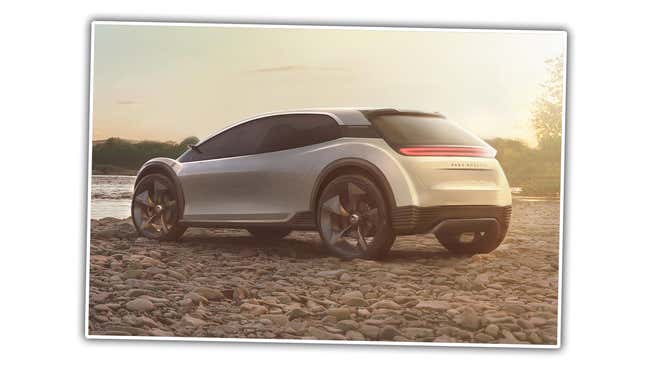
Now, this isn’t a new idea by any means; as I mentioned, the German microcar Zündapp Janus packaged its tiny 248cc two-stroke twin between the seats, along with the fuel tank and everything else, making a sort of two-Isettas-welded-back-to-back sort of thing, which was a clever solution for a microcar, but wasn’t really great when it came to being able to communicate with your back seat passengers or having any sort of real luggage space.
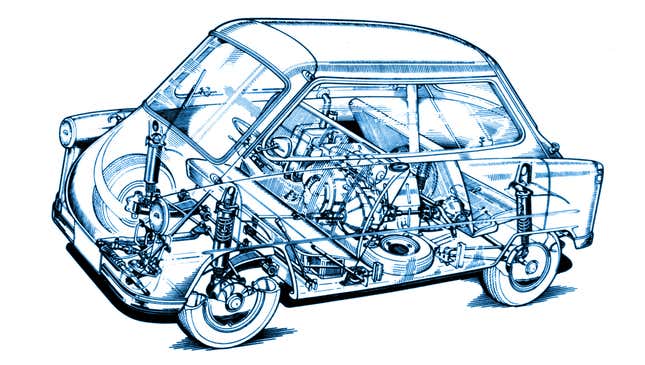
Less well-known is that Dick Teague’s original designs for the AMC Pacer also were planning on a central Wankel engine/rear-facing back seat design, though that was scrapped pretty early on:
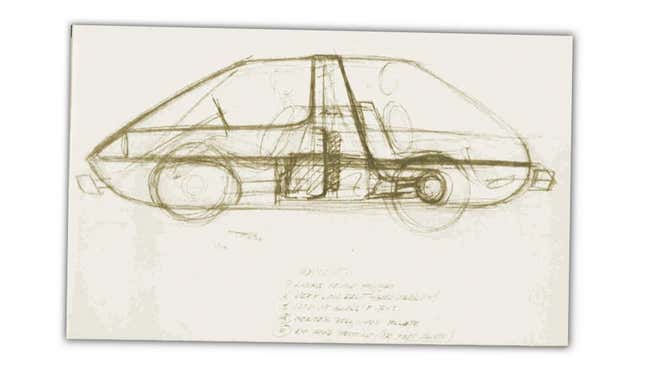
As you can see, Page-Roberts designs feel like electric versions of this very same concept:

Now, there’s certainly some novel appeal to this vertical, central battery idea, but dividing interior volume right in the middle feels like too big a compromise, and I’m not exactly sure I buy all of their seemingly optimistic numbers when it comes to increased range they can get from this packaging solution.
Also, I feel like they should be emphasizing the use of frunks more in these drawings.
Let’s dig a little deeper here. Would a battery pack like the one shown here have a similar volume to a floor-mounted battery pack, like the one in a Tesla Model 3, for example?
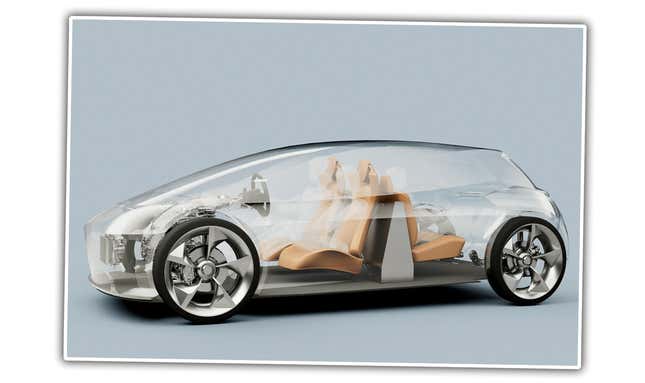
Using the scale of the seats as a guide, we can estimate that the battery pack seen above there has a base of about 20 inches, a top width of about six inches, a height of about 25 inches.
If we compute the volume of that six-sided shape (David helped me with the math), we end up with about 12.5 cubic feet of volume. The floor-mounted battery pack of a Tesla Model 3 is only about 11.8 cubic feet of volume, so just from a raw volume standpoint, it seems pretty on par there.
Okay, so there should be enough room to cram batteries in there, but do we really want to?
According to Page-Roberts, there’s lots of reasons to choose this setup; here’s just a few of the justifications they give:
Weight savings
The efficient crash structure and reduced exposure of battery to impact leads to weight savings of 35 to 75 kg compared with the underfloor battery arrangement, and the lower vehicle height saves a further 8 to 25 kg.
Lower drag forces
Being lower than vehicles with underfloor batteries, potential designs punch a smaller hole through the air, reducing aerodynamic drag forces. The lower height also enables greater rake to the vehicle surfaces, aiding aerodynamic efficiency.
The aerodynamic drag forces are typically reduced by 20 to 30% compared with underfloor battery arrangements.
Increased efficiency
The combination of significant weight savings and lower drag forces delivers world class efficiency. Typical efficiencies for this arrangement based on standard components are 130 to 180 Wh/mile based on WLTP.
The efficiency gains translate into the potential for either an extended range by up to 30%, or to use a much smaller battery to achieve a similar range.
Enhanced agility
The Page-Roberts arrangement guarantees excellent ride and handling due to a conventional wheelbase with a low centre of gravity and low inertia.
With the arrangement for a battery up to about 60kWh, the centre of gravity is similar or better than the underfloor battery arrangement. The underfloor battery pack gains a slight centre of gravity height advantage when the battery pack exceeds 75 kWh.
I’m just not sure I’m really buying all of these numbers, which don’t seem to have actual explanations of where they came from. I suppose there may be some weight savings from not needing as much impact protection at the ends of the vehicle, but it’s not like the battery packs on any modern EVs really extend beyond either axle — they’re not just sitting right behind the bumpers, so I don’t think a car meeting modern crash-protection standards would really need any less hardware.
Plus, while the weight in a vertical pack is central, it’s a tall package, and the case they state with a 60 kWh pack having a similar center of gravity is for a pretty small pack — if you’ve ever carried a big dictionary vertically instead of laying flat I think you understand that a low, flat pack would be more stable.
With a lower floorline, maybe they’re right about aero, but at the moment, everyone wants SUVs, so even if you could have a lower floor, the current market isn’t exactly demanding that.
Also, when they talk about this:
Design freedom
The vehicle’s reduced height, compared to vehicles with underfloor batteries, allows for the design of sleek and stylish vehicles and sports coupes.
Only the Page-Roberts arrangement can deliver four seat electric vehicles with the low classic proportions of 2+2 GT sports coupes.
...I think they’re kind of delusional. When it comes to design freedom, you just can’t beat a flat skateboard. It’s a literal blank canvas. A skateboard with a huge, bisecting wall of battery smack dab in the middle is in no way offering more freedom of design and packaging. Who are you trying to kid, Page-Roberts? Come on.
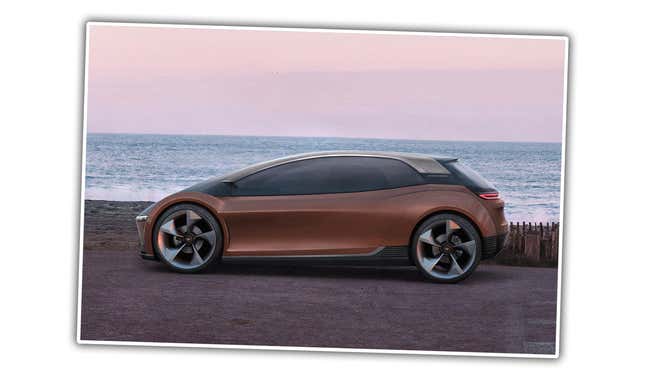
Rear-facing seats are fun, sure, but mostly for kids, and they can be disorienting and inconvenient for just about everyone else. I think this packaging concept has some potential for small, low, two-seater sports cars, but I think I’m still on Team Skateboard for now.




